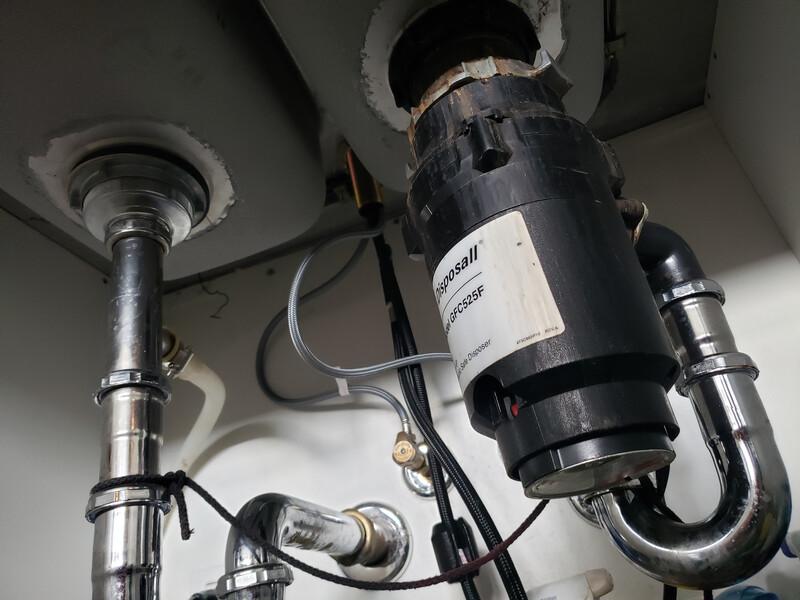Effortless Ways to Repair a Leaky Waste Disposal Unit
Effortless Ways to Repair a Leaky Waste Disposal Unit
Blog Article
Right here below you can locate additional amazing content all about How to fix a pretty consistent leak from my garbage disposal.

Waste disposal unit are necessary kitchen appliances that assist in dealing with food waste efficiently. Nevertheless, a dripping garbage disposal can be an aggravating and messy problem to take care of. Thankfully, many leaks can be taken care of easily with a couple of basic actions. In this post, we will discuss just how to deal with a leaking waste disposal unit efficiently.
Introduction
Waste disposal unit are mounted under kitchen sinks and are designed to shred food waste right into smaller sized pieces, permitting it to travel through the plumbing system easily. While these gadgets are generally reputable, leaks can happen over time as a result of wear and tear, loose links, or damages to the unit.
Step-by-Step Guide to Fixing a Leaking Waste Disposal Unit
Switch off the Power
Prior to trying any repairs, make sure that the power to the garbage disposal device is turned off to prevent the threat of electric shock.
Locate the Leakage
Identify the precise location of the leakage and identify the reason
Tighten up Links
Utilize a wrench to tighten any type of loose links in between the disposal system and the plumbing system.
Replace Seals or Gaskets
If the leak is because of used seals or gaskets, eliminate the old parts and change them with new ones.
Patching Cracks or Openings
For cracks or holes in the disposal device, usage epoxy or a suitable patching product to seal the broken location.
Determining the Resource of the Leak
Before trying to take care of a leaking waste disposal unit, it is vital to determine the source of the leakage. This can commonly be done via visual assessment or by conducting basic tests.
Visual Evaluation
Check the garbage disposal unit thoroughly for any type of signs of water leak. Pay attention to areas around seals, gaskets, and link factors.
Testing for Leaks
One means to test for leakages is by running water with the disposal device and looking for any kind of noticeable indications of leak.
Typical Sources Of Leaks in Waste Disposals
Worn Seals and Gaskets
Seals and gaskets play an essential role in stopping water from dripping out of the waste disposal unit. In time, these elements can deteriorate, bring about leakages around the disposal system.
Loose Connections
The connections between the garbage disposal and the plumbing system can become loose gradually, creating water to leakage out during procedure.
Splits or Openings in the Disposal System
Physical damages to the waste disposal unit, such as fractures or holes in the housing, can likewise cause leakages.
Devices and Materials Needed for Dealing With a Dripping Garbage Disposal
Prior to beginning the repair service procedure, collect the essential tools and products, consisting of a screwdriver, adjustable wrench, plumber's putty, substitute seals or gaskets, and epoxy or patching material for fixing cracks or holes.
Testing the Garbage Disposal After Fixing
As soon as the fixing is full, test the garbage disposal by running water through it to ensure that the leakage has actually been settled.
Preventive Upkeep Tips to Stay Clear Of Future Leakages
To avoid future leaks, it is important to do routine upkeep on your garbage disposal. This consists of maintaining it clean, preventing placing non-food items or tough items down the disposal, and occasionally checking for leaks or other concerns.
Verdict
Finally, fixing a leaking garbage disposal is a fairly straightforward procedure that can be completed with basic tools and materials. By complying with the steps detailed in this short article and exercising preventive maintenance, you can keep your garbage disposal in good working condition and avoid pricey repairs in the future.
What to Do About a Leaking Garbage Disposal
A leaking garbage disposal often goes unnoticed until you confront a sopping cabinet, a foul-smelling puddle, or an audible drip-drip-drip from the unit. The fix can be frustrating, too, because the leak can stem from a number of components in the system. Fortunately, with a little sleuthing, you can zero in on the leak and—depending on the exact location—stop the icky oozing and repair the component that caused it. Worst case scenario, if it turns out that the garbage disposal must be replaced, installing a new one is a reasonable do-it-yourself task for those with basic plumbing skills. Read on to keep the cash you’d otherwise hand over to a pro.
Prepare to find the leak
Prior to testing the garbage disposal for leaks, unplug it at the wall outlet and turn off the power from the breaker box to prevent electrical shock. Then insert a watertight sink stopper into your sink drain and wipe the unit dry with a clean cloth. In any handy container, mix a few drops of food coloring into a few cups of water, and pour the dyed water onto the sink stopper to help you locate the leak.
Investigate the source
the top, where the disposal meets the sink drain the side, where the dishwasher hose or main drain pipe connects to the disposal or the bottom of the unit Inspect each of these locations while gliding a light-colored rag over the unit; the dyed water will readily show on the rag and reveal the location of the leak. If a leak isn’t immediately apparent, remove the sink stopper and pour a few more cups of dyed water down the sink drain, then check for leaks again. Leaks near the top of the unit are more likely to show themselves while the sink is plugged, while side and bottom leaks are more noticeable while the sink is unplugged.
The metal sink flange that sits directly inside the sink drain is typically sealed around the top with plumber’s putty (a clay-like sealant) and then secured from under the sink with bolts. If the plumber’s putty deteriorates, or the bolts loosen, the flange can no longer form a watertight seal between the sink drain and the disposal—which could cause a leak at the top of the unit.
To reseal the leaky flange, you must first detach the garbage disposal. Start by loosening the screws securing the main drain pipe to the disposal, then loosen the screws in the metal clamp securing the dishwasher hose to the disposal and detach the drain pipe and dishwasher hose from the disposal. Loosen the screws in the mounting ring that connects the disposal to the metal mounting assembly beneath the sink, then pull down the disposal and carefully set it on a clean, dry surface. Loosen the bolts in the mounting assembly with a wrench, then pull down the mounting assembly and set it near the disposal.

We were shown that editorial about Garbage Disposal Leaking From Bottom from an associate on our other web page. Enjoyed reading our entry? Please share it. Let someone else discover it. We love reading our article about Why Is My Garbage Disposal Leaking From the Bottom?.
Visit Site Report this page